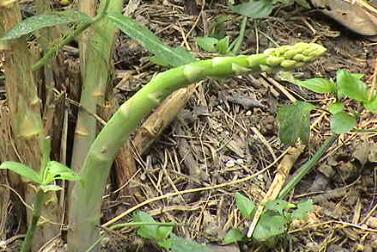Explain the planting method of tulips in detail! Six tips to teach you to grow beautiful flowers!
Now more and more people like to plant tulips, do you know how to grow tulips? Next, the editor will introduce the planting methods of tulips for you in detail, and teach you to raise beautiful tulips through these six tips!

When is the best time to plant tulips?
Tulip planting is usually sown in the open field in autumn, that is, at the end of November or early December, ready to be planted. The depth is between 1 and 1.5 cm. The density of productive planting can be controlled at 12 × 12 cm or 13 × 12 cm, which varies slightly according to different varieties. Generally speaking, the leaves are erect, and the varieties with short plants can be closely planted properly.
Topdressing is generally carried out after seedling emergence, bud formation and after flowering. The bulb takes root in winter and topdressing twice before flowering in spring. It blossomed from the end of March to the beginning of April, and the aboveground leaves were yellow and dormant at the beginning of June. In the process of growth, it is generally not necessary to water, just keep the soil moist, and water properly in case of drought.
2. Disinfection of tulip bulbs
Soak the low-temperature treated seed balls in disinfection solution (formalin or carbendazim solution) for about 30 minutes.
3. Selection of flowerpots and soil for planting tulips
You can choose a flowerpot with a caliber of about 20cm. If there is no matrix soil, you can also use sandy soil. The soil should be fertile, permeable and breathable, and some slow-release compound fertilizer should be properly mixed as base fertilizer. Professional ones can be prepared with 6 parts of rotten leaf soil, 3 parts of sandy soil and 1 part of rotten barnyard manure.
IV. Planting methods of tulips
Put the seed ball upright in the middle of the flowerpot, and the planting depth is generally 1.5 times the size of the seed ball. Plant several trees in a pot according to the size of the flowerpot. Generally, 3 plants can be planted in triangular shape in 20cm basin. When filling the soil, use your fingers to press properly around the flowerpot to better secure the seeding ball. Do not press in the middle of the bulb, otherwise it is easy to damage. Just press it and fill it softly.
Daily management of tulip planting
In general, tulips are watered immediately after planting, and then keep the soil moist until the tulips sprout. After the tulip sprouts are unearthed, the dilute liquid fertilizer can be applied every 10 days or so, and the phosphorus and potassium fertilizer can be applied once from budding to flowering. Always keep the basin soil moist and keep it in a sunny place.
VI. Temperature control of tulip planting
Tulips can not bear cold and heat, and can survive at minus 30 degrees, but they will go into dormancy in hot seasons. If you want tulips to blossom, you must undergo low temperature baptism before they can blossom. So, if you want tulips to blossom, you must remember to treat them with low temperature.
Through the above tulip planting methods of the six tips, I believe you have a certain understanding of growing tulips, I hope you have played to help you. This paper is integrated with the network.
Time: 2019-03-14 Click:
- Prev

How to plant potted lemons? Do you have any points for attention?
Lemon is a small evergreen tree of the genus Citrus of Rutaceae. Leaf blade small, long oval, leaf margin serrulate. Flowers are solitary, blooming all the year round and full of fragrance. Next, let's take a look at how to grow potted lemons. Key points of lemon pot cultivation techniques: 1. Raising seedlings and pots: large amount of cultivation in the south, so it is suitable to use grafting propagation.
- Next

What kind of plant is asparagus, a high-grade, nutritious and valuable vegetable? What are the planting prospects?
Many people don't know what kind of plant asparagus is. Asparagus is actually a kind of valuable vegetable with both excellent taste and excellent taste. It has delicious and fragrant flavor, soft and delicious fiber, can increase appetite and help digestion, and has rich nutrition and high medicinal value. The tender stem of asparagus has delicate texture, soft and delicious fiber and unique fragrant taste.
Related
- Fuxing push coffee new agricultural production and marketing class: lack of small-scale processing plants
- Jujube rice field leisure farm deep ploughing Yilan for five years to create a space for organic food and play
- Nongyu Farm-A trial of organic papaya for brave women with advanced technology
- Four points for attention in the prevention and control of diseases and insect pests of edible fungi
- How to add nutrient solution to Edible Fungi
- Is there any good way to control edible fungus mites?
- Open Inoculation Technology of Edible Fungi
- Is there any clever way to use fertilizer for edible fungus in winter?
- What agents are used to kill the pathogens of edible fungi in the mushroom shed?
- Rapid drying of Edible Fungi

